If I had a dime for every article and Internet post comparing the 9mm to the .45 ACP cartridge (and the guns that shoot them) I could probably pay cash for a new Ferrari. That said, I make no apologies for this being another one. In this case (and for this article), one of the variables I have sort of eliminated is the gun. Both are Springfield Target model 1911 autos in stainless steel. They’re the two pistols you see in the photo above.
Here’s a macro photo of the 9mm cartridge (designed in 1901; also known as the 9×19 and the 9mm Luger) and the .45 ACP cartridge (designed in 1904). Both of the rounds shown below are my reloads, which I prefer over factory ammo for many reasons. We’ve written a lot about reloading both cartridges, and you can find those articles here.
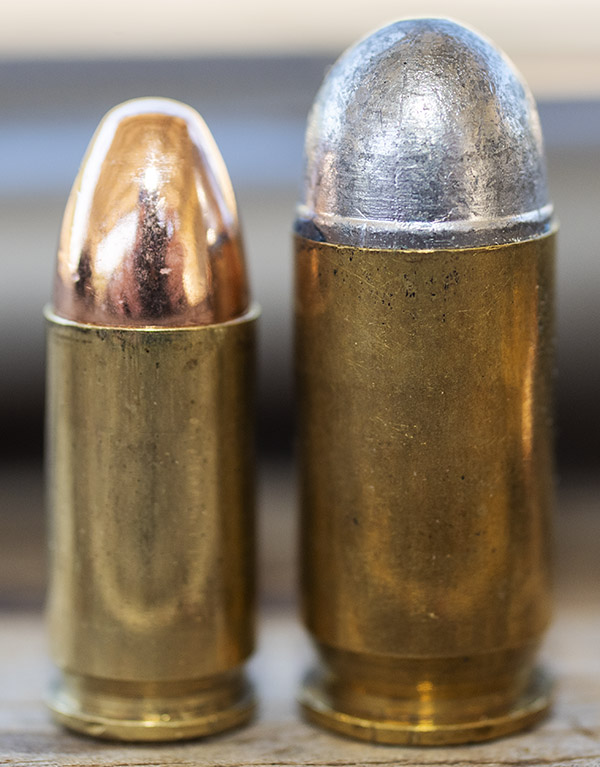
For this comparison, I used the Springfield Armory magazines that came with of the two 1911s. Here’s what the ammo looks like in the magazines.
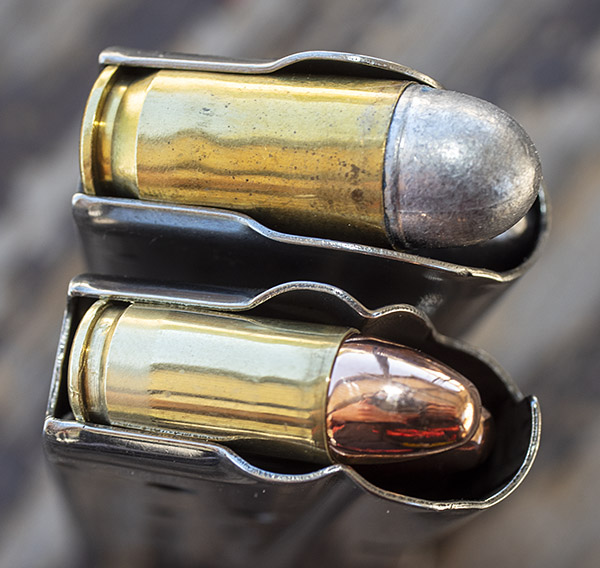
The Springfield target guns have nice features, including click adjustable rear sights, dovetailed and pinned front sights, ambidextrous safeties, target triggers, skeletonized hammers, and more. I didn’t like the two-piece guide rods that came with both guns (you need a tool to unscrew the two-piece guide rods for takedown). Another two-piece guide rod issue is that they constantly unscrew. I immediately replaced those in both guns with one-piece guide rods.
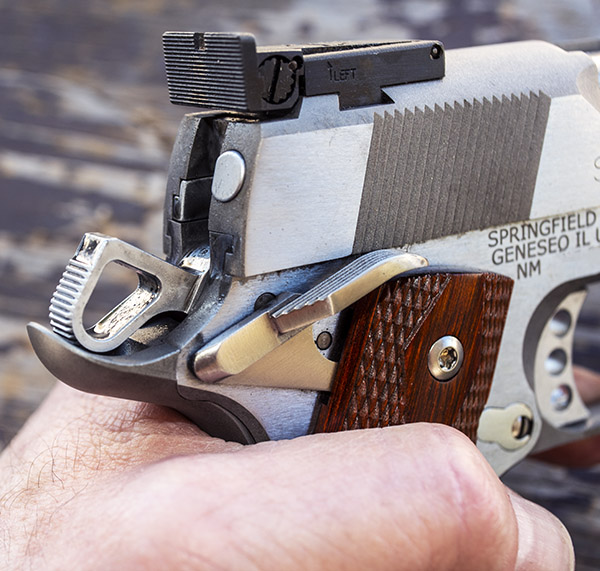
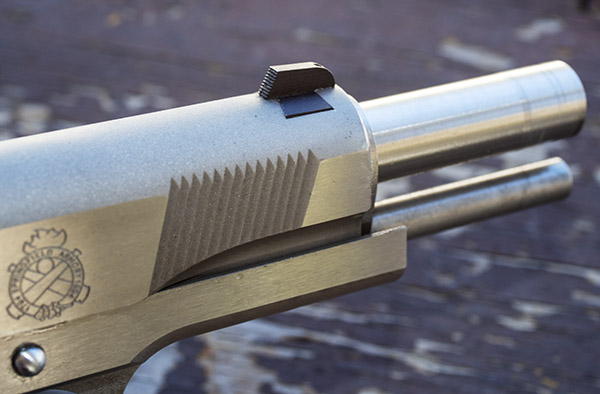
What has been a disappointment on the .45 Springfield was that the stainless steel was not properly passivated (it came this way from the factory). The gun exhibited minor corrosion in a few spots after a while, which is unacceptable for a stainless steel firearm. It’s the only stainless steel gun I’ve ever owned that did this. The corrosion comes right off with a bronze bristle brush and the steel beneath it then looks pristine, but you shouldn’t have to do this with a stainless steel firearm, much less one purchased new.
My 9mm 1911 had a problem with its front sight. The pin securing it in place backed out under recoil. I contacted Springfield about that and they sent an oversized pin. It similarly backed out. I applied Loctite to the pin and very lightly peened the edges at the top of its hole in the front sight, and that seems to have fixed the problem.
Neither of the above issues should have been present. I’ve purchased three new Springfield Armory firearms over the years and every one of them has had an issue. My Springfield M1A rifle had two issues: The magazines were extremely tight going into the receiver, and the ejected .308 cartridge cases were striking and damaging the stock. I sent the rifle back to Springfield. Springfield fixed the magazine fit issue (that fix worked) and they attempted to address the cartridges impacting the stock (that fix did not work). The cartridge cases still hit the stock after being ejected (even after Springfield did a ham-fisted job removing wood in the impact area), so I put electrician’s tape on the stock where the spent cases impact before I take it to the range. The rifle is quite accurate, but damn, you shouldn’t have to deal with issues like this on a new gun. I believe these things speak to a generally sad state of affairs in Springfield’s quality assurance and process control. But I’m going off track a bit. Let’s get back to the topic of this article, and that’s the two 1911 Springfields.
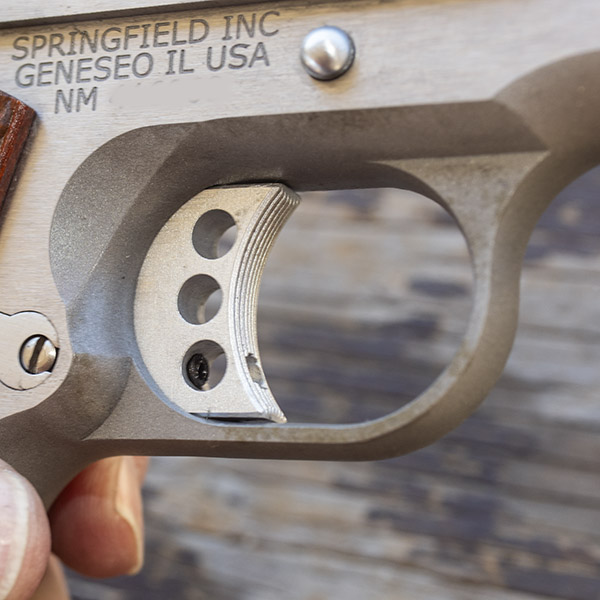
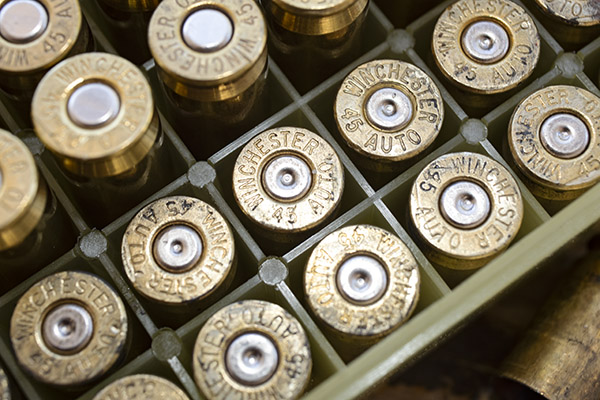
In my most recent outing with both 1911s, the .45 was significantly more accurate. I believe that to generally be the case when comparing the .45 ACP and 9mm Luger cartridges, and this range day was no exception. The 9mm load I used was a 124-grain Xtreme plated roundnose bullet over 5.5 grains of Accurate No. 5 propellant. The .45 ACP load was a 230-grain Missouri cast roundnose bullet over 5.6 grains of Unique propellant (an accuracy load that always works for me). I shot the targets shown below on the 50-foot West End Gun Club handgun range using a two-hand hold supported by a rest beneath my hands.
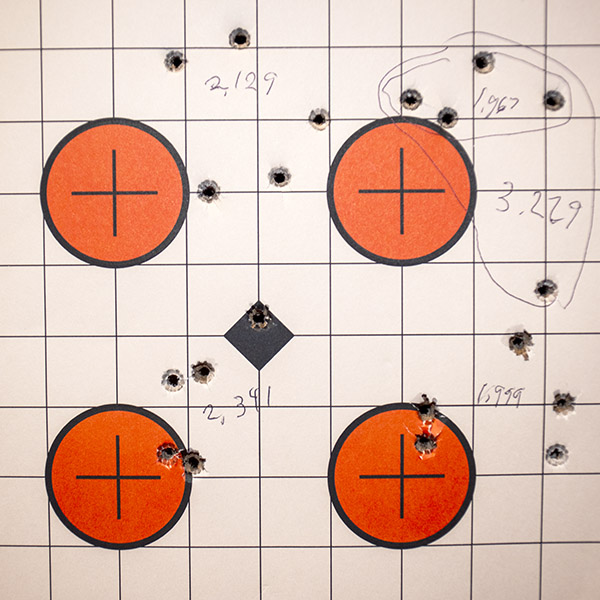
The 9mm grouped okay, but not great. I’ve shot other loads in this handgun that were much more accurate, but I didn’t have any of those loads in the ammo locker the day I went to the range. If you would like to know about this, you can read about my 9mm ammo development efforts with the 9mm 1911 (and other handguns) using cast bullets and jacketed bullets.
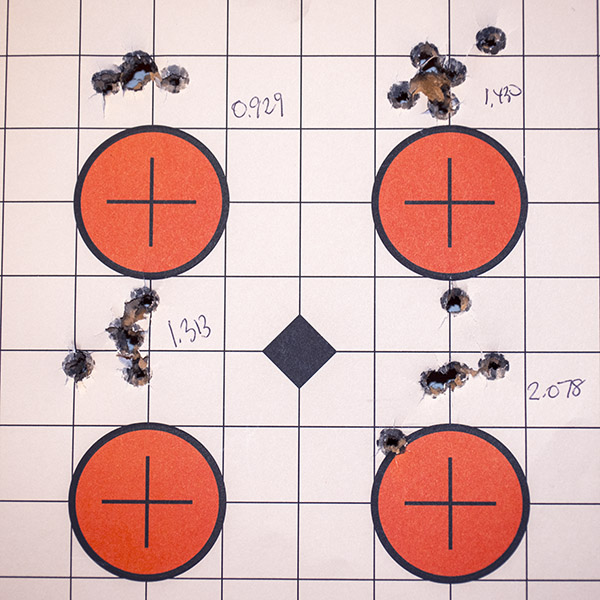
The .45 1911 grouped very well. It’s a funny thing: The 9mm 1911 has way less recoil than the .45 and the trigger on my 9mm 1911 has been tuned to perfection by good buddy TJ (you can read about that here), but I shoot better with a .45 (and I always have). The .45 1911 barks like a Rottweiler and it kicks like a mule, but the thing is just flat accurate.
So there you have it: Another take on the rehashed ad infinitum 9mm versus .45 ACP argument. If you have an opinion, please weigh in with a comment or two below.
If you would like to read a bit more about how to shoot a handgun well, that story is here.
Never miss an ExNotes blog:

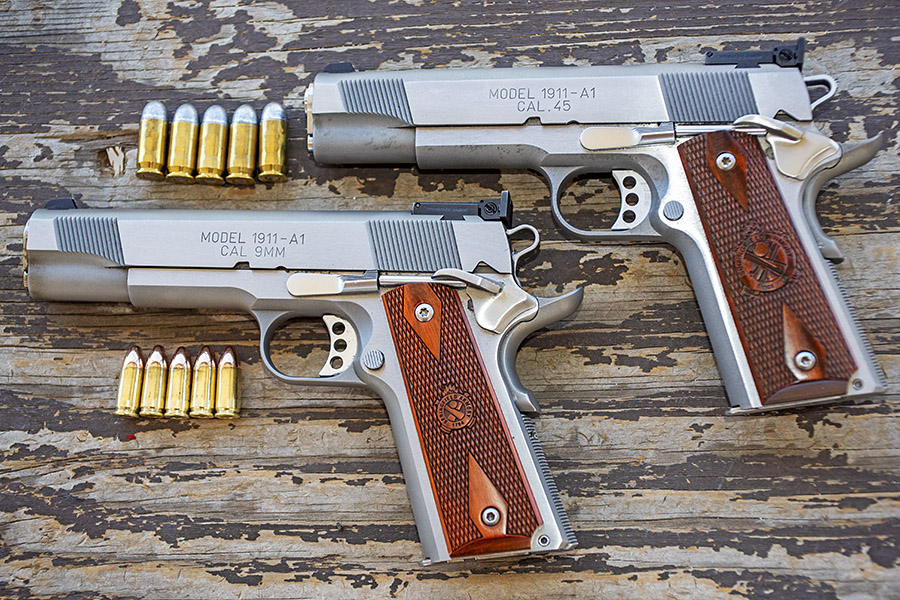

It’ not the size of the round that counts, it’s where it hits.
Agreed; however, I know a retired police officer who shot a bad guy with a .45. Hit him in the arm. The police officer told me the hit picked the guy up and threw him on the ground.
I have very little experience with the .45 but years ago when my buddy and I were on a range he let me shoot his Gold Cup and I really had trouble with it. I think that shooting a 1911 in .45 is a kind of unique experience in handgunning and it maybe takes a little special training. But the knock down power is awesome.
I think the ability to shoot a handgun well is a perishable skill, even more so with the .45. Both the 9mm and the .45 are awesome.
Thanks for commenting, Bob.
Very interesting take on these guns. Now I know. Nice shooting.
Thank you, Marcus, and thank you for commenting.